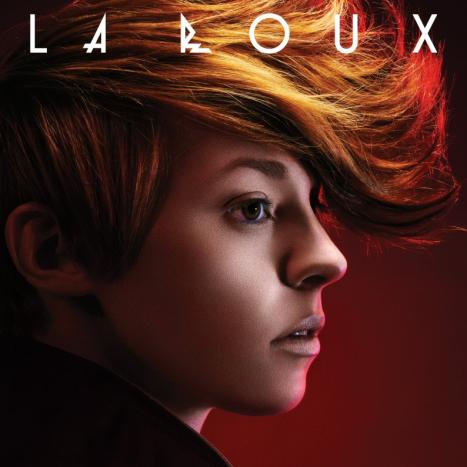 LA ROUX — s/t
LA ROUX — s/t
The only reason I came to know of La Roux is because my disgruntled friend, Sam of Manchester, England, wouldn’t stop going on about how much he hated the album. We were going over sets for our next DJ event in Tokyo, discussing what kind of music to scrap and what to keep. “I can’t stand them,” he said of the British duo, “but Tokyoites eat it up. Throw it on, and they go nuts.” His eyebrows were furrowed, as always, forming a permanent scowl. “More proof that Japanese people have the shittiest taste in music,” he said haughtily. Curious as to what it was he loathed so much, I threw it on my iPod and played it on a crowded Tokyo train heading into center city on a Friday night. I instantly understood what it was Sam couldn’t stand. LA Roux was catchy, fun, glossy and sexy — the epitome of everything Sam isn’t. The sweet British-accented lyrics and fluttery synthesizers mixed with playfully dark and mysterious undertones had me hooked by the first listen. It’s exactly the kind of music you want to hear before heading into a classy, all night Tokyo club loaded with fashionable drunk people. And Sam was right: Japanese people do go crazy over this stuff. The DJ threw on Bulletproof and kids all around me were dancing like superstars. Every person in the room thought the song were being played for them. It’s that kind of album. It was then that La Roux made music history for me in 2009. — EVA LIAO
*
*
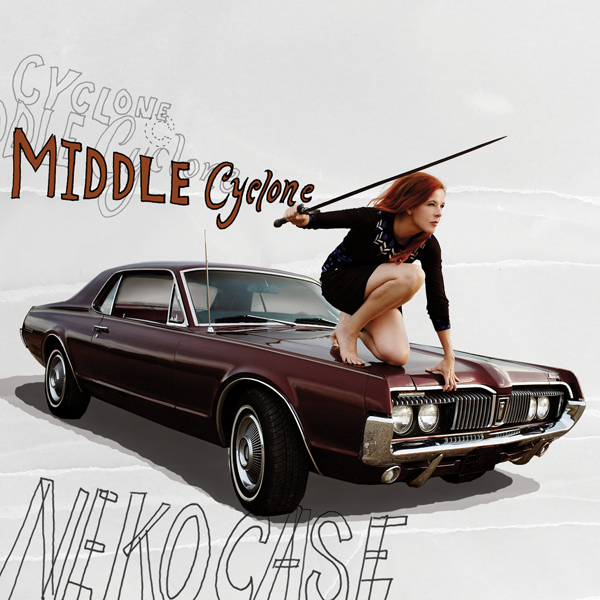 NEKO CASE — Middle Cyclone
NEKO CASE — Middle Cyclone
A tomboyish siren with a thick red mane and lungs of fine Corinthian leather, Neko Case is equal parts gender warrior and indie aesthete, a potent hybrid aptly evoked by the Joan-of-Arc-on-a-muscle-car tableau on the cover of Middle Cyclone. Case is also in possession of what is arguably the greatest voice of her generation — clarion in tone; trans-national in its reach; and bottomless in its capacity to transmute wryly-observed public fictions into inescapable private truths that all more or less boil down to: I am woman, hear me ruminate. From the wide-screen countrypolitan cover of Sparks’ “Never Turn Your Back On Mother Earth” to the starry night campfire reverie of “Middle Cyclone” to the so-lonesome-I-could-cry reading of Harry Nilsson’s “Don’t Forget Me” the album stakes out a uniformly lovely vibe that’s reassuring even at its most forlorn: autumnal, moonlit, like there’s a kind of hush all over the world tonight. — JONATHAN VALANIA
*
*
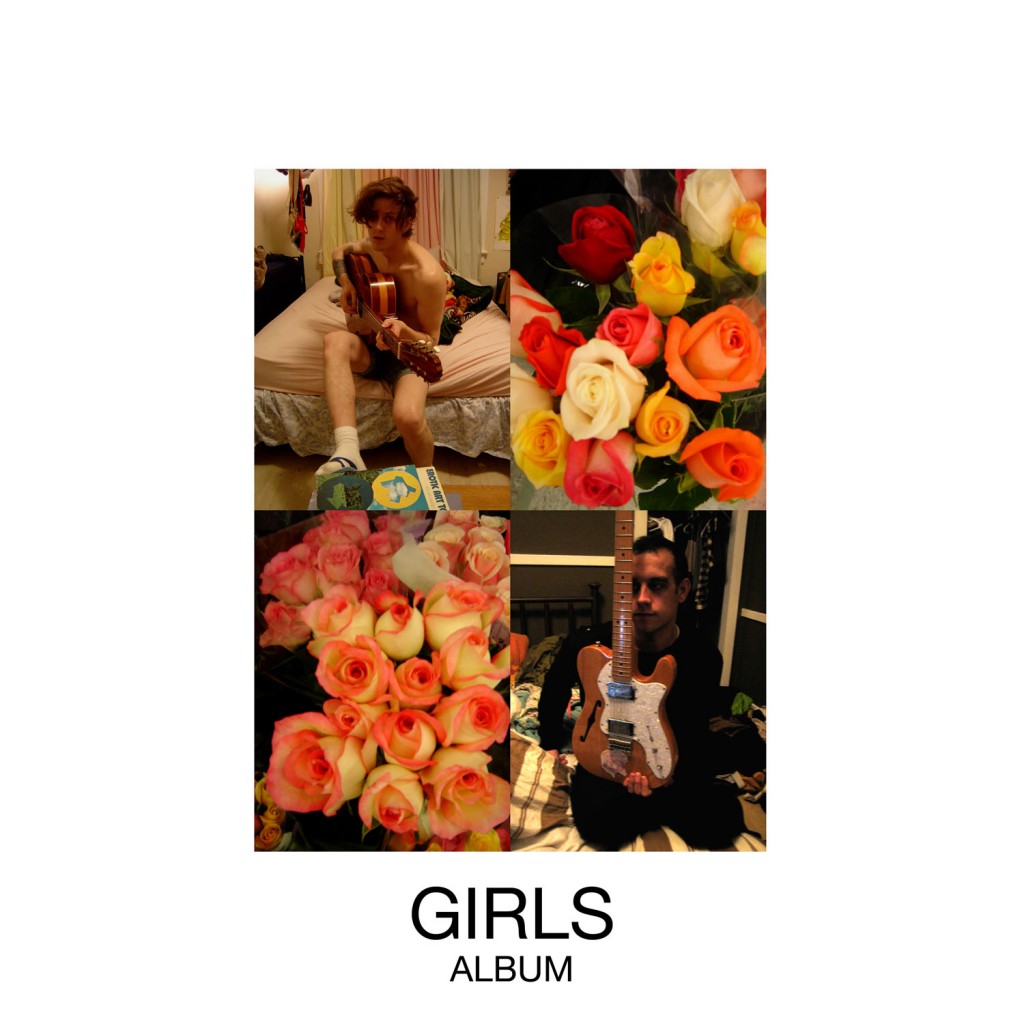 GIRLS — Album
GIRLS — Album
I know the name of the album is stupid, and at first I didn’t like lead singer Christopher Owen’s long, stringy, platinum blond hair either. I thought it was an obvious cry for attention. When I found out it was, that the entire album was in fact just a dramatic cry for help — one emotional gut-wrenching song after the other, needing to be heard, felt, and shared — the hair became justified. I was going through a quarter-life crisis when I first heard “HellholeRatrace ,” the bands first single, and it had the perfect wistful-melancholy-romantic-dreamy-achy effect everyone craves when depressed. Then, later on in the year, I met a boy. A boy I liked. A boy who, like Girls, was from San Francisco. He was the only other person on the entire freakin’ island (I live in Japan) who had also heard of Girls, and knowing him sort of put the album into perspective for me. When I took him home one night, we drank sake and danced to Album together until we fell asleep. He told me how the mood of the music reminded him of his slacker, grassy knoll, druggie days in SF. His favorite song was “God Damn.” A good choice, I thought, because of its off-beat rhythm and Owen’s random high pitch squeals. But I liked “Summertime” best, for its poignant lyrics and heavy guitar rifts. We both liked the mix of My Bloody Valentine-like instrumentals with sunny California style surf songs. Ultimately, Album was the only album to truly move me this entire year, maybe because I was displaced on an island. But more likely because it was the only honest, vulnerable, heartbreaking and daringly eclectic piece of work to have arrived all year. — EVA LIAO
*
*
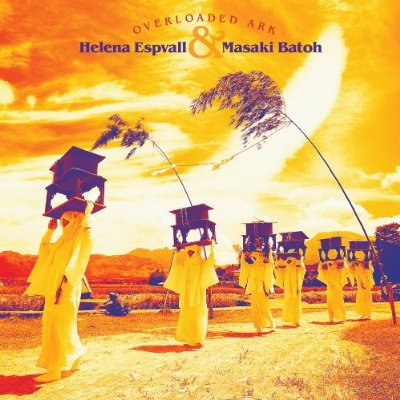 HELENA ESPVALL & MASAKI BATOH — Overloaded Ark
HELENA ESPVALL & MASAKI BATOH — Overloaded Ark
The Swedish cellist from Espers hooks with Masaki Batoh of Japanese psych explorers Ghost for a second CD of globe-spanning folk music. Espvall makes dramatic sounds with her guitar, cello and harp while Batoh elevates the ancient melodies with modern organ and electronics, propelling the music into a timeless droning bliss. Spirited playing and a disinterest in authenticity keeps the program from coming off like the Nonesuch world music sampler and when Espvall’s voice finally rises above the medieval dirges to take flight on ”Sueno Con Serpientes” it feels like you are present at the birth of song itself. — DAN BUSKIRK
*
*
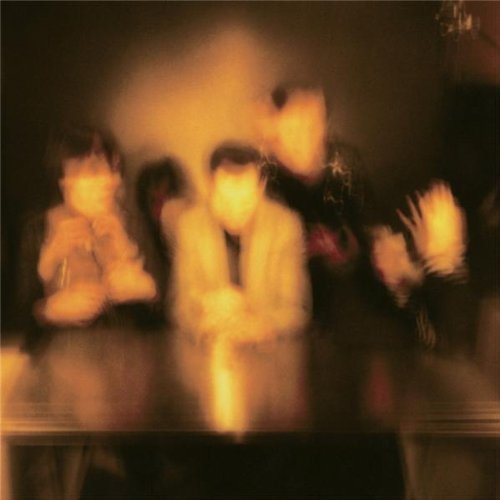 THE HORRORS — Primary Colors
THE HORRORS — Primary Colors
The Horrors came on to the indie-rock scene dressed all in black, with cartoon haircuts and a love for Iggy and The Stooges they combined with their other hobby, slasher films. Their debut album Strange House was widely panned as being style over substance, with little musical talent. With this in mind, The Horrors went back to the studio with nothing but production from a guy from Portishead and some old Joy Division records to create this dark, shimmering masterpiece. Combining Kevin Shields-esque shoegazey guitar work with Joy Division bass-lines and synths , The Horrors did the whole Radical New Direction thing to great effect. It was melodic, haunting, beautiful, and even succeeded in rocking a little bit. Where before frontman Faris Badwan would be shrieking over a harshly feedbacking guitar, we find him actually singing, and who would have known, but he actually has a very good voice. Singles “Who Can Say” and “Sea Within a Sea” are some of the best songs on the album, oozing wonderfully out of your speakers. — JAMIE DAVIS
*
*
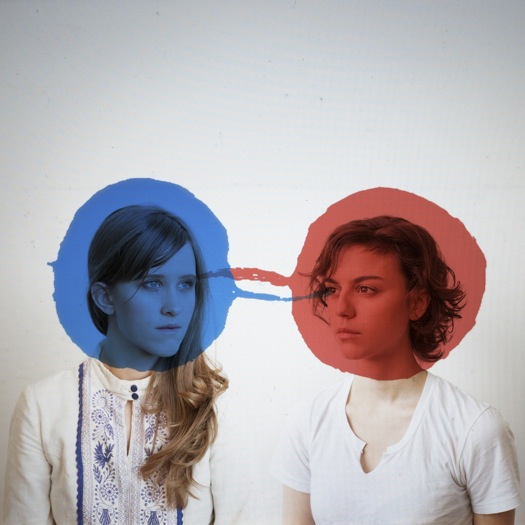 DIRTY PROJECTORS — Bitte Orca
DIRTY PROJECTORS — Bitte Orca
David Longstreth, head songwriter for the Dirty Projectors, is packing a degree in music from Yale, but his Ivy League pedigree doesn’t come across like that of the Columbia-educated lads of Vampire Weekend.Longstreth’s tunes are jumpy, weird and angular, more in the tradition of the Downtown avant-garde than in Vampire Weekend’s Upper West Side Afropop . He and his killer rhythm section toss off acrobatic riffs that aren’t pinned down to a regular time signature. The guitars ripple and cascade, but ultimately take a back seat to the vocals, sung by a band of lady bandmates , which are variously layered, fractured and styled after a form of pre-Renaissance classical polyphony (seriously). It might sound brainy, but it’s actually bootylicious — a kind of restructured R&B, featuring slinky grooves spiked with Longstreth’s airy falsetto. All I can say is, thank U 4 the funky times. — DAVE ALLEN
*
*
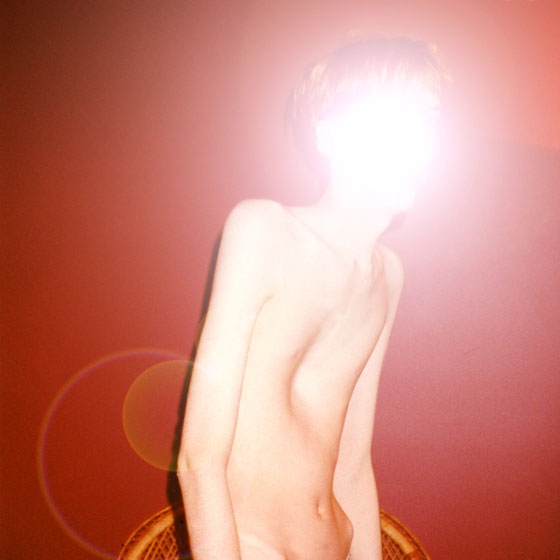 ATLAS SOUND – Logos
ATLAS SOUND – Logos
Atlas Sound is the most-of-the-time solo project of Deerhunter frontman Bradford Cox, and on previous outings listeners invited to tune in, drop out and withdraw into his bedroom of fuzz pop. On Logos, we find a more extroverted Cox getting out of the house and even collaborating with other artists. On the Deerhunter blog, Cox has posted several mixes and copped to the influence of Animal Collective friends David Portner (Avey Tare) and Noah Lennox (Panda Bear). And sure enough, the dreamy, hazy pop of “Walkabout” features Lennox. It’s built like a Panda Bear song, but with Cox’s playfully taunting, “What did/ You want to see/ What did you want/ To be when you grew up”. My favorite song on the album has Stereolab’s Laetitia Sadier joining forces with Cox in “Quick Canal”, which doesn’t come as a surprise, because he’s listed them as such a large influence on his music early on in his life. Aside from the collaborations, there are some lovely stuck-in-your-head-all-day tracks on Logos, such as “Sheila”, with that 60’s-rock guitar and Cox’s drawling voice, “Sheila/ You’ll be wife/ You’ll share my life/ Sheila/ We’ll die alone/ Together” There’s also the synth- and loop-heavy “Washington School” with Cox singing “Shine a light on me” somewhere in the remote dark. It’s clearly a hat-tip to Birmingham’s Broadcast, which Cox admitted during his last show in Philadelphia when he toured with the UK duo.. — TIFFANY YOON
*
*
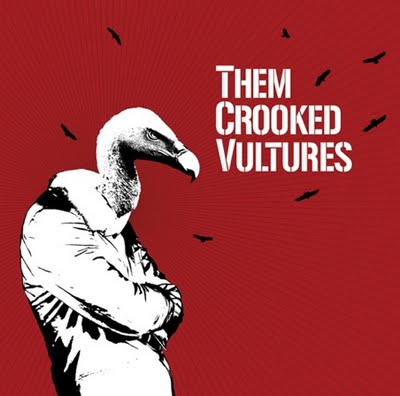 THEM CROOKED VULTURES — s/t
THEM CROOKED VULTURES — s/t
The drummer from Nirvana, the singer for Queens of The Stone Age, and then the bass player from motherfucking Led-Zeppelin. This, ladies and gentlemen, is the supergroup that all the other little supergroups have nightmares about. I mean, this creature exists in the real world, but seems more like the product of late-night, beer-fueled rock nerd bull sessions — “okay,myyyy best band ever…” — so obviously when this group was launched the hype was immediately massive. Then they played Reading Festival, destroyed all the other bands, and the hype only grew larger. All they had left to do was make the album. And what an album they made. Thirteen tracks of unadulterated rawk, with all the riffage you would expect from QOTSA and the guy who brought us “Black Dog”, combined with the greatest power-house drummer of the 90’s. Now with all this rocking going on, there was always the worry that this would go too far into the hero-worshiping, Wolfmother/Jet side of the aisle. But never fear, the lyrics avoid the standard cliches, and Josh Homme’s guitar work gives it an unmistakable 21’st century edge. This is music anyone could headbang to without feeling guilty, and the record hard-rock needed to take the stink off from groups like Staind and Hinder. — JAMIE DAVIS
*
*
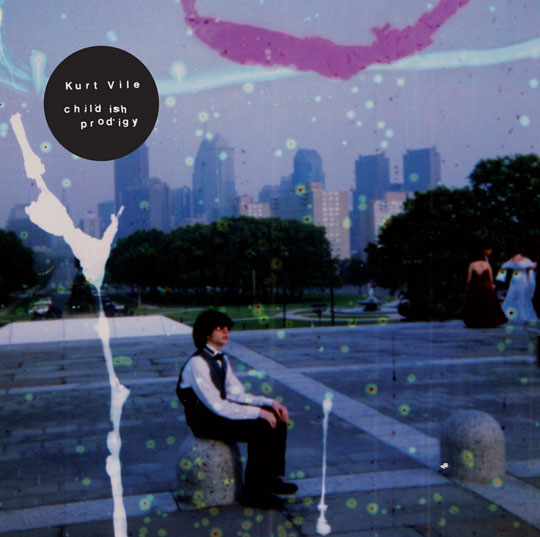 KURT VILE — Childish Prodigy
KURT VILE — Childish Prodigy
Vile smoothly up-shifts on this follow-up to last year’s buzzed about Constant Hitmaker, trading in his debut’s lo-fi bedroom sound for a slightly livelier, full-band version. Again, Vile pairs down classic rock to its transcendent moments then lingers there in rock heaven, too cool to take it to the bridge. A proud offspring of Philly’s long-crawling murk-and-roll tradition, Vile rocks like a waterlogged Stooges cassette but he spends just as much time here making pretty with quietly jangly sunset sounds. — DAN BUSKIRK
*
*
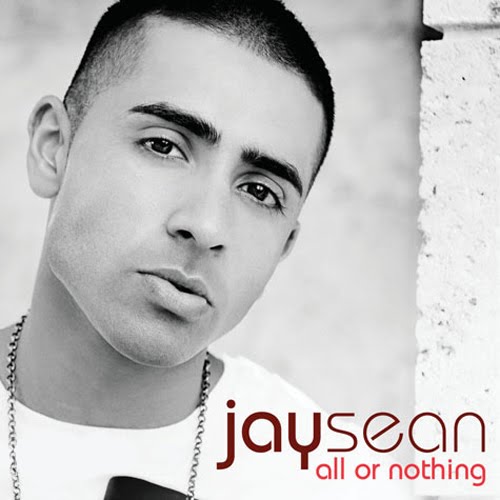 JAY SEAN — All Or Nothing
JAY SEAN — All Or Nothing
When I went to see Jay Sean perform at Philadelphia’s Plush nightclub this past July, the folks who came to see him were primarily South Asian. Jay Sean, originally Kamaljeet Singh Jhooti, had been performing his fusion of Bhangra & hip-hop for South Asian audiences for years. But after this Brit signed with Cash Money Records this past year and released the song “Down,” his listener demographics expanded dramatically. In October, Sean’s “Down” was No. 1 on the Billboard Hot 100, the first artist of Asian origin to achieve this distinction. With the release of his album, All or Nothing, Sean continues to appeal to teenagers who swoon over his smooth vocals. (There’s also the sex appeal part. Have you seen those washboard abs? Watch out, Usher.) From performances on the Ellen Show to Macy’s Thanksgiving parade, Sean continues to dominate the airwaves. And just a few days ago, he became the first South Asian artist since Freddy Mercury to perform at Madison Square Garden. I predict 2010 will be a great year for this “new” artist. — PHILLYGRRL
*
*
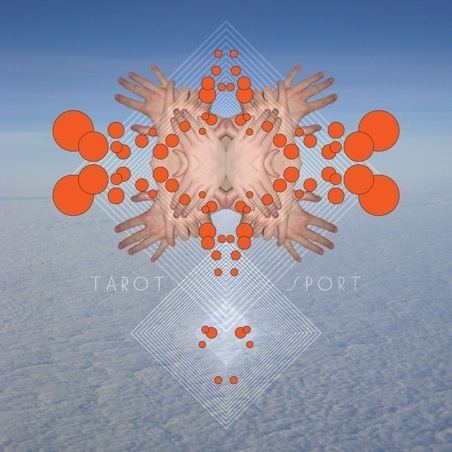 FUCK BUTTONS – Tarot Sport
FUCK BUTTONS – Tarot Sport
Fuck Buttons are a synth-happy, jerry-rigging-whatever-they-can-to-make-a-noise-they-like duo from the UK featuring Benjamin John Power and Andrew Hung. Tarot Sport has a menacing, trance-inducing pace that puts you on a path towards something unknown, something both beautiful and a little frightening at the same time. The Fuck Buttons haven’t changed their formula — a mesmerizing spider’s web of pulsing electronic beats and loops — but I’m not complaining one bit. “Lisbon Maru” dances to the same beat as “Sweet Love for Planet Earth” from their debut Street Horrrsing, but in a higher frequency and with the notable absence of that gravelly rasping voice that haunted so much of that record. It has a martial drummer boy feel to it, which makes sense after discovering it’s named after a Japanese freighter that sunk with drowning POW’s aboard in the early 1940’s. All in all, the album is bound to enchant and entrance you, but still get you moving your booty to the beat. — TIFFANY YOON
*
*
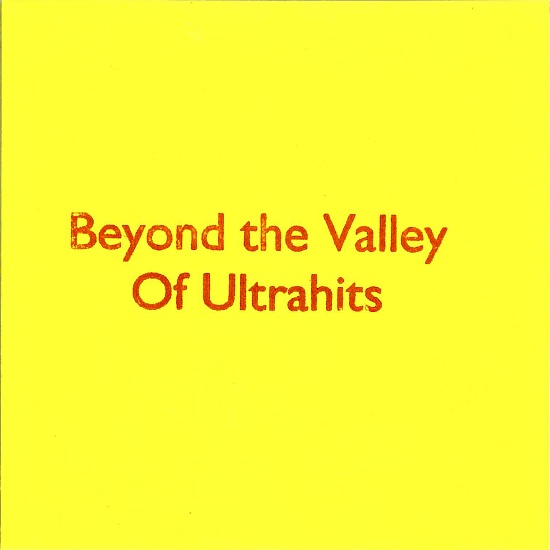 RICHARD YOUNGS — Beyond The Valley Of Ultrahits
RICHARD YOUNGS — Beyond The Valley Of Ultrahits
Youngs seems intent on never being nailed down, noodling earnestly between projects of electronic noise improvisation and experimental songcraft, while never repeating himself. This year, between two other releases, the brash & glitchy tones of Like A Neuron and the folkier madrigals of Under Stellar Stream, Youngs quietly released this, his most pop-oriented recording yet. With a voice as truthful and earnest as Robert Wyatt, Youngs sings ten hook-filled tunes which rumble and surge like the lost eighties hits of a less insipid Genesis or an unusually eloquent Peter Gabriel. — DAN BUSKIRK
*
*
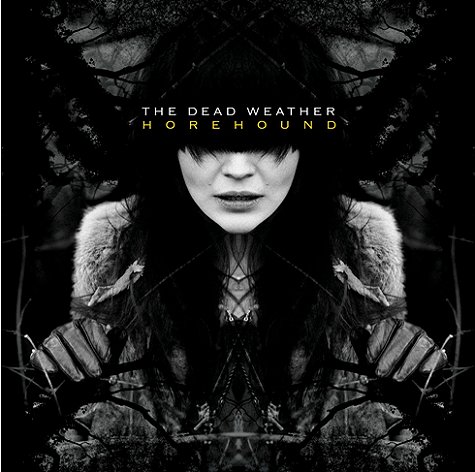 THE DEAD WEATHER — Horehound
THE DEAD WEATHER — Horehound
Jack White has a new band! And he’s the drummer! That’s right, he is now recording with THREE different groups, not to mention putting out a solo single, managing a record label, and being in a movie this year. You would think the man would be stretched thin by now between all his commitments, but apparently he thrives on having to do a lot of stuff, judging from the utter absence in a drop of quality. This album is much darker than anything he has done before, lyrically and musically, with songs like “So Far From Your Weapon” and a reverb coating on everything. Singer Alison Mosshart from The Kills shows off her raw vocal chops, as fuzzed-out guitar and bass pile up beneath her wailings . The songs have heavy grooves as well, with huge sounding riffs that jump up out of nowhere to bludgeon your face before slinking back into the dark. What is important about this album however, is it’s very real, earthy sound. It’s all recorded on analog tape, and the guitars are intentionally tube-overdriven for a warm sound. In one song you can even hear the crickets chirping through the windows in the studio. This is what Jack White is trying to bring back to music, the connection to something real. In a year when Lady Gaga has ruled the charts, a singer who intentionally takes artificiality to new heights, he is an even more important presence. — JAMIE DAVIS
*
*
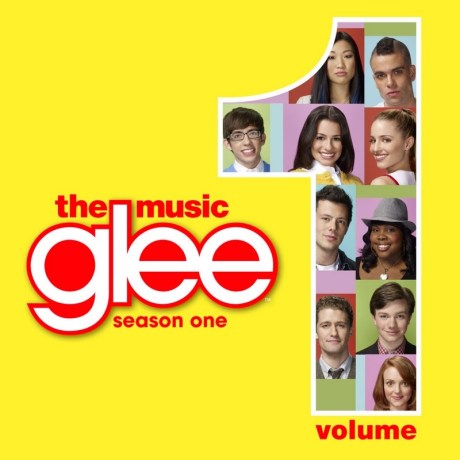 VARIOUS ARTISTS — Music from Glee, Vol. 1
VARIOUS ARTISTS — Music from Glee, Vol. 1
Rolling Stone called “Glee” the “gayest. show. ever.,” but Fox’s breakout sitcom is more than just a camp-fest. On the show, and on this collection of over-the-top production numbers that are the highlight of each episode, there’s a splash of magical realism — football players doing a fully-choreographed version of “Single Ladies (Put a Ring on It)” during a game comes to mind — and unabashed, overt striving in the struggles, triumphs and, above all, the performances of its high-school-age cast. Layered vocal harmonies — especially acappella ones — were everywhere this year (see my write-up of Dirty Projectors, and Jamie’s of Grizzly Bear). I’ll cop to singing a cappella during college, too, but I know this much is true: it’s not cool. Fans of the show and its music aren’t called “Gleeks ” for nothing. But the way the harmonies rang and blended this year, not least on both the TV and album editions of “Glee,” I halfway believed it was. — DAVE ALLEN
*
*
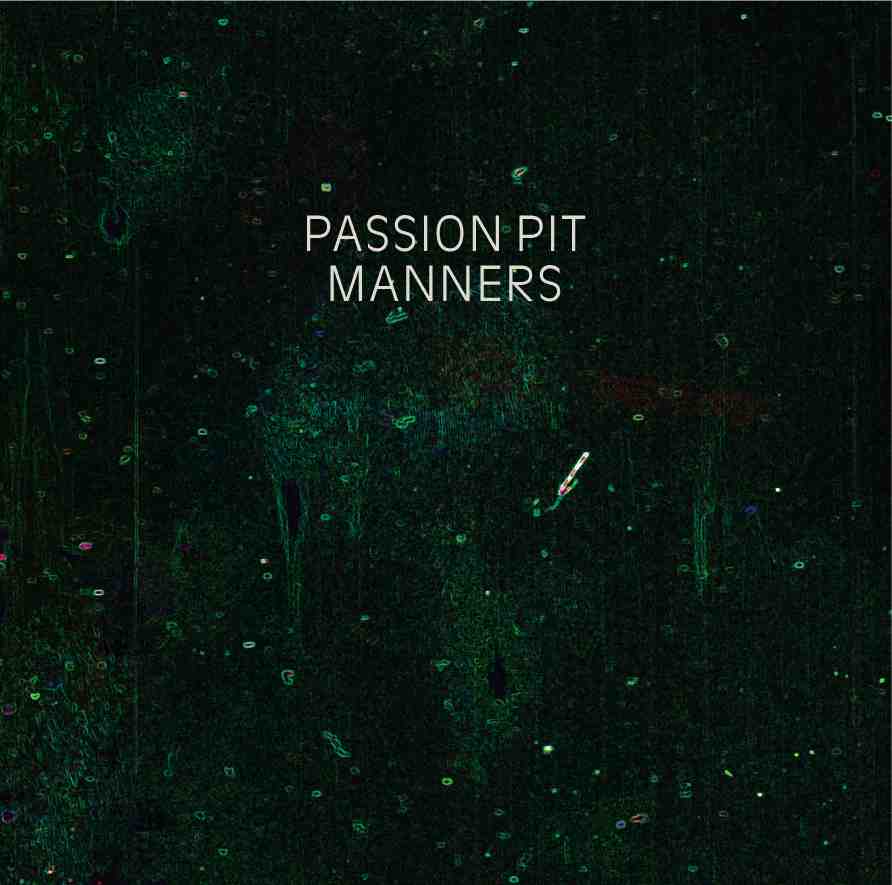 PASSION PIT – Manners
PASSION PIT – Manners
Passion Pit’s Manners is unavoidable. Overplayed on YRock and remixed times ten, this Cambridge based five-piece’s brand of indie pop is an instant guilty pleasure made of synth and crazy back beats. Despite frontman Michael Angelakos’ nearly nauseating vocals, Manners’ elementary lyrics are upbeat and coy, making Passion Pit (unfortunately) hard to ignore. Somehow, “Little Secrets,” “the Reeling,” and the re-released “Sleepyhead” are enough to turn a barely original release into every hipsters’ fave. — DIANCA POTTS
*
*
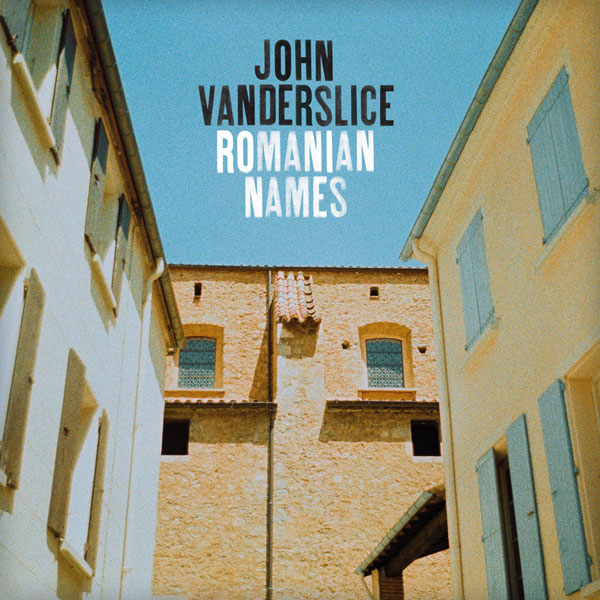 JOHN VANDERSLICE — Romanian Names
JOHN VANDERSLICE — Romanian Names
I’ve seen John Vanderslice listed under the heading “Baroque pop.” I hate to quibble, but he’s really carrying on the traditions of the Romantic period — think Brahms, not Bach — with dark, sumptuous chords and unexpected shifts in harmony. The fine details of his music — lacing together delicate piano,pillowy bass, strings, synths, lightly ticking drums and splashing cymbals — are aural bliss. It’s all in the service of literary, nuanced pop, though, and what’ll keep you hooked are JV’s lyrics, which fully and often bleakly etch complex characters. As his sound has grown more lush in his albums from the Aughts, there’s an increasingly cryptic, withdrawn quality to the lyrics and the personae behind them. What is this mysterious acronym “D.I.A.L.O.”? Where is the “I” of “Too Much Time” waking up and tying up his sleeping bag? After puzzling over them a while, you’ll eventually relent and ride the wave of rich sonics, which comfort as his lyrics unnerve. — DAVE ALLEN
*
*
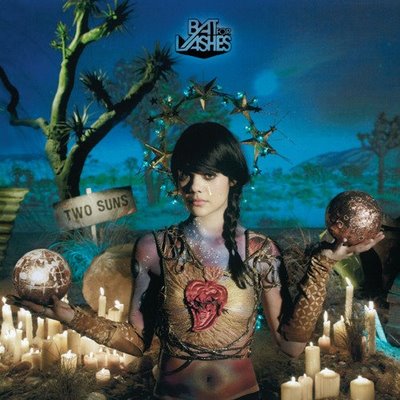 BAT FOR LASHES – Two Suns
BAT FOR LASHES – Two Suns
Two Suns is gorgeously haunting and primal. Opening with Natasha Khan’s flawless voice mixed with muffled city soundscapes, Bat for Lashes’ second full length is provocative and dark, sounding like a lovelorn fever dream with psychedelics and hypnotic hooks. A subtly composed concept album, Khan’strippy manifesto to her inner and outer self includes legends like Scott Walker and Brooklyn dwellers Yeasayer. Rarely said about any album, Bat For Lashes Two Suns is perfect. And no, I’m not being cliché. Biggest regret of ’09? Not catching Khan live last spring. — DIANCA POTTS
*
*
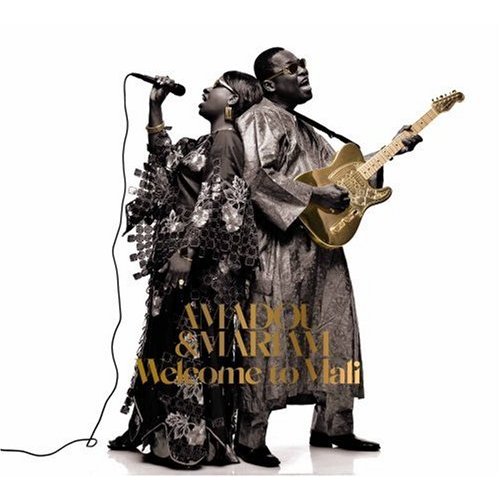 AMADOU & MARIAM – Welcome to Mali
AMADOU & MARIAM – Welcome to Mali
With Welcome To Mali, husband and wife duo Amadou & Mariam (Amadou Bagayoko and Mariam Doumbia) somehow top the dreamy heights 2005’s widely-praised Dimanche à Bamako. It’s amazing how much this blind couple with a deep appreciation for music has come to accomplish over the years. From Dimanche à Bamako — meaning Sunday in Bamako, where both Amadou and Mariam were born — came the global hit, “Beaux Dimanches”. Then in 2006, they collaborated with German artist Herbert Groenemeyer to create “Celebrate the Day”, which became the official 2006 Fifa World Cup anthem. And now comes Welcome to Mali, which combines influences from British pop and American psychedelia. “Sabali”, the single off the album, with its poppy hooks and Mariam’s sweet melodic voice prove A & M can still make a dance-y track, even though they’re both nearly pushing 60! It was produced by Blur’s Damon Albarn, and it’s also been remixed by Paul Epworth (Block Party, Kate Nash, The Rapture). Then again, with “Djuru”, A & M slow things down a bit with blues guitars and a steady, infectious beat. Then there’s the album-closing “Bimogo” which sounds like Malian-infused classic rock with heavy blooze harmonica and Hendrixian guitar scribble. And if that don’t get yer ya-yas out, you ain’t got none to get out. — TIFFANY YOON
*
*
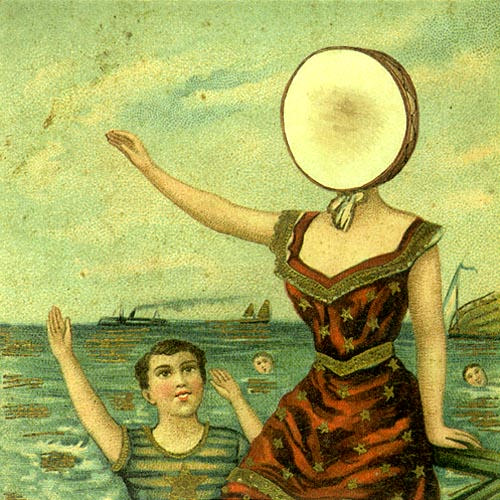 NEUTRAL MILK HOTEL — In the Aeroplane Over The Sea
NEUTRAL MILK HOTEL — In the Aeroplane Over The Sea
The torch has been passed to a new generation, may it serve them well. Originally released in 1998, Neutral Milk Hotel’s trippy-sad paen to Ann Frank — a little girl who hid in the walls from the Nazis that would eventually kill her, who still believed “despite everything, people rally are good at heart” — has gone on to achieve stone cold classic status. Jeff Mangum’s mewling sunshine Superman melodies are colored by bare, ruined choirs of singing saw, fuzz bass, mariachi horns, bowed banjo, accordion, home organ and Salvation Army marching band brass. These harrowing, heart-tugging tunes follow Mangum’s fractured yelp, soaring on wax wings toward the sun only to land softly on a surrealistic pillow of sound fashioned out of enough obscure instrumentation to give your average ethnomusicologist a Viagra woody – zanzithophone, euphonium, uilleann pipes and a shortwave radio. All these years later it still sounds like nothing less than mercy itself. Like Amelia Earhart, Magnum and co. were never heard from again, but like Jack with his magic beans, Neutral Milk Hotel proved that with little more than a pocketful of seeds and stems, you could grow a beanstalk to heaven. – JONATHAN VALANIA
*
*
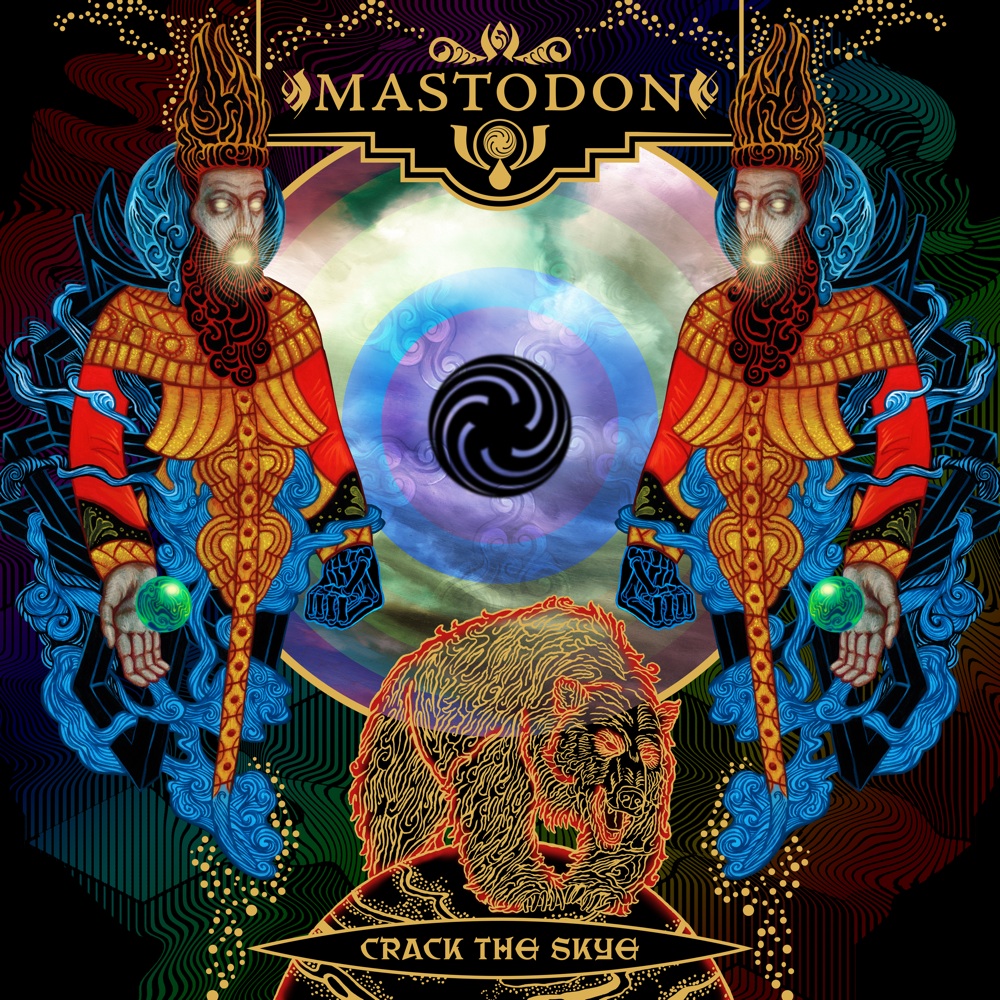 MASTODON – Crack the Skye
MASTODON – Crack the Skye
Considering their recent mainstream success Mastodon might seem too commercial a contender for album of the year to some metalheads but the fact is that this record is an instant classic that recalls the epic scope of classic metal albums I grew up with in the late 70s and early 80s. Scott Kelly of Neurosis delivers another soul crushing cameo for the band on the title track and 13 minute album closer the Last Baron is aprog-metal odyssey in the best possible sense. The spelling is intentional, btw; the album was meant as a tribute to drummer Brann Dailor’s sister, Skye, who committed suicide at the age of 14. — JEFF DEENEY
*
*
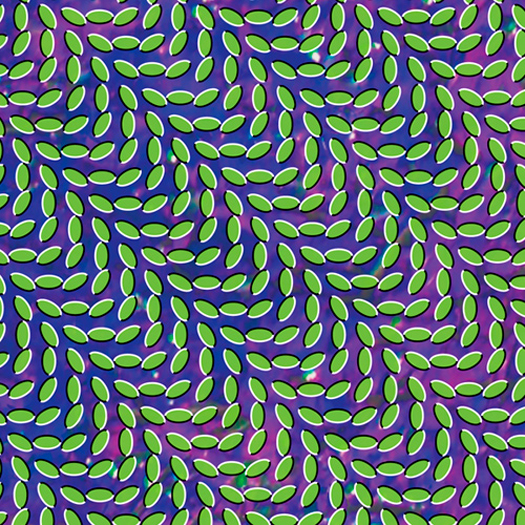 ANIMAL COLLECTIVE — Merriweather Post Pavilion
ANIMAL COLLECTIVE — Merriweather Post Pavilion
One of my first memories of Merriweather Post Pavilion happened a few weeks after the record dropped. I was at Medusa Lounge with a few friends and no one was dancing. That all changed with the DJ started spinning a remix of “My Girls” that sounded like the Beach Boys in a blender and everyone lost their motherfreaking minds. This heavily-anticipated album gives Animal Collective fans a different taste by taking on a more psychedelic pop sound than the band’s previous albums which lean towards noisy indie rock. Merriweather Post Pavilion‘s unique fusion of African rhythms, sunbeam harmonies, and trippy synths is not only a new sound for the band, but it sounds completely unlike anything else released this year. The lyrics focus almost entirely on love and family responsibilities, which is completely appropriate for the band’s more solid, mature sound and newly married-with-children circumstances. Animal Collective has somehow struck just the right balance of druggy frisson which makes Merriweather Post Pavilion perfect for getting people shaking their hips at a club or for coming down afterwards while lounging around your apartment. — ASHLEY MYERS
*
*
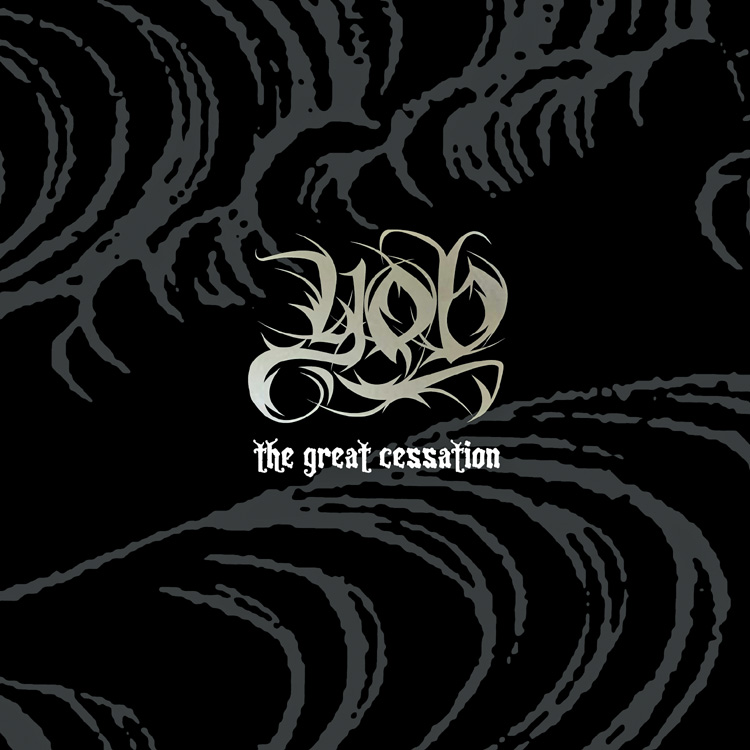 YOB – The Great Cessation
YOB – The Great Cessation
YOB are a bunch of crusty stoners from Portland who play psychedlic doom metal. This whole album is packed solid with pummeling Sabbath-on-steroid type riffs but it’s the album ending 20 minute title track that pushes into album of the year territory. Here the band channels some unexpected slowcore influences, sounding all pretty and quiet and shit like Low until erupting into a crushing plod that eventually dissolves into a spacey, heavily doped-out drone. There is a reason stoner rock is dead but YOB lives on. — JEFF DEENEY
*
*
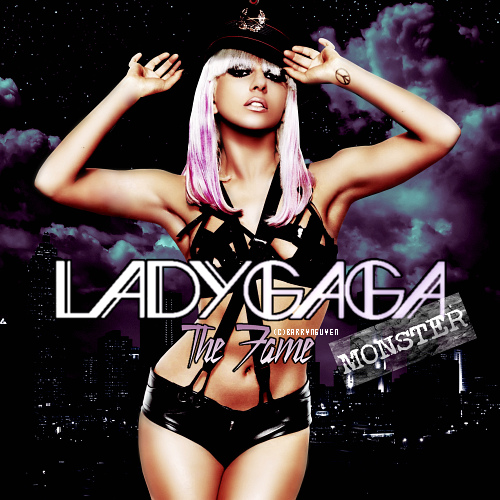 LADY GAGA – The Fame Monster
LADY GAGA – The Fame Monster
Here’s the deal with Lady Gaga, it’s not about the music. Forget every synthy pop beat of hers you’ve ever heard. Frankly I don’t care about that part as much as I do the clothes. And neither does anyone else. In her 2009 album, The Fame Monster, Gaga’s song “Bad Romance” is less about the words (“Rah rah ah-ah-ah!/Ro mah ro-mah-mah/Gaga Ooh-la-la!”) than the incredible stylings in the music video itself. From the towering Alexander McQueen platform shoes to the black glitter-tipped nails, every inch of Lady Gaga’s body is teased into a style that changes her music from hum-drum to fab-glam. Go into any club on a weekend night and you’ll see the girls, dipping and diving to a Lady Gaga song; her charm lies not only in her bubblegum sound, but her appeal as a fashion icon. Gaga is the embodiment of someone who takes haute couture and brings it to the masses. Now that’s a sound I can get behind. — PHILLYGRRL
*
*
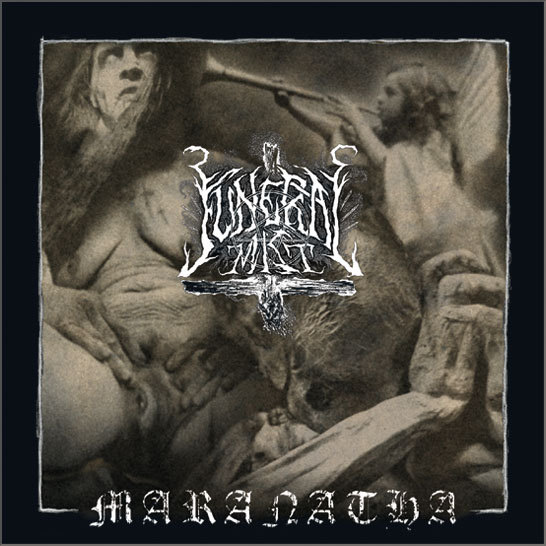 FUNERAL MIST – Maranatha
FUNERAL MIST – Maranatha
At the end of the day the only real reason to listen to black metal is to hear some psychotic Scandanavian motherfucker completely losing his mind on tape and believe me, one-man-band Funeral Mist serves up the serious crazy sauce in this department. Mortuus delivers probably the most over the top vocal performance I’ve heard since Anaal Nathrakh’s Total Fucking Necro (like you know what that means), managing to sound uncannily like the cellar-dwelling demon from Evil Dead 2. He’ll swallow your soul! — JEFF DEENEY
*
*
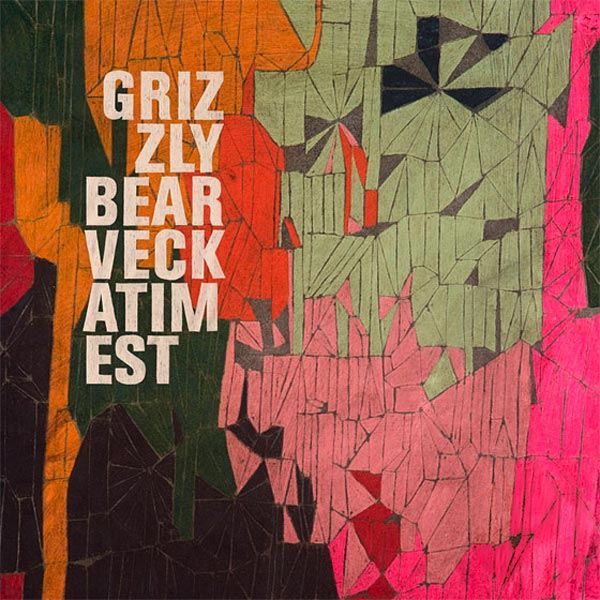 GRIZZLY BEAR – Veckatimest
GRIZZLY BEAR – Veckatimest
Even before Veckatimest was released back in May it was clear it would be hard to beat for album of the year. Grizzly Bear deftly mixes together pristine harmonies, acoustic instruments and electronic bells-and-whistles to create the quintessential dorm room bongfest soundtrack. The record is intricately assembled with each instrument and voice given equal space in the mix which coalesces into gorgeous, gossamer whole. Unlike their previous recordings, where the focus of the music was on the singer, Veckatimest feels more like an ensemble effort and the songs are all the better for it. Each song comes cloaked in a rich tapestry of sound that, taken as a whole, creates one of those mythical teenage symphonies to God. Amen to that. — ASHLEY MYERS
*
*
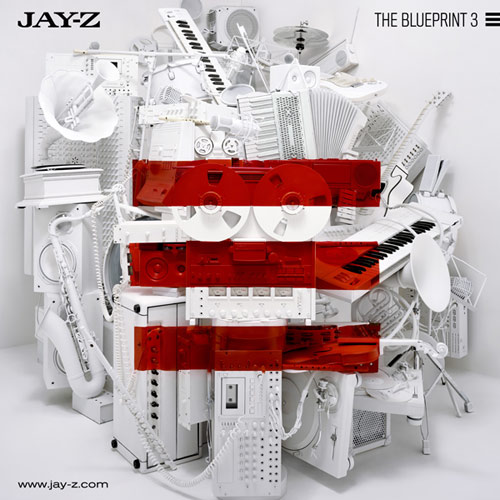 JAY-Z – The Blueprint 3
JAY-Z – The Blueprint 3
In November, the New York Times compared Jay-Z to Frank Sinatra. There was even a photo of Sinatra flush under one of Jay-Z, ostensibly to show the evolution of American music icons (I assume). In the article, the critic emphasized the New York sound that he thought Jay-Z embodied a la Sinatra. With songs such as “Run This Town” and “Empire State of Mind,” which were peppered with NYC references, Jay-Z’s 2009 album, The Blueprint 3, was responsible for the Times labeling him a “New York archetype.” During the height of the Yankees/Philly’s rivalry, there was even the release of “Philly State of Mind,” which attempted to rival the lyrical prowess that is Jay-Z and his machine. But to no avail (sorry, man, good try there). Personally, I don’t find The Blueprint 3 “New York” so much as “American.” What’s more American than “Concrete jungle where dreams are made of” and “Labor Day parade, rest in peace Bob Marley/ Statue of Liberty, long live the World Trade”? In The Blueprint 3, Jay adds another respectable album to his resume. Long live Jay-Z! — PHILLYGRRL
*
***
CONCERT OF THE YEAR: Leonard Cohen At The Academy Of Music
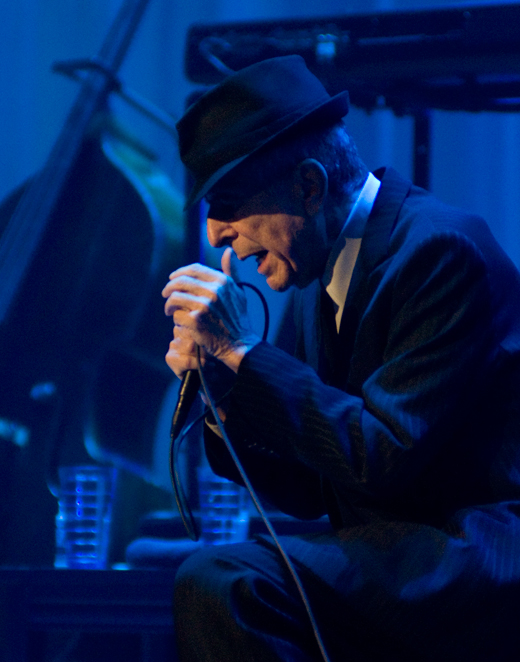
[Photo by MICHAEL T. REGAN]
I’M YOUR FAN: Leonard Cohen on bended knee, Academy of Music, 5/12/09
![]() BY JONATHAN VALANIA The Great Man glides onstage in black pinstripes and a fedora like a gangster cantor, double-breasted and tie-less, his crisp creamy blue shirt buttoned-up to the neck David Lynch-style. He seems to walk on air. He was born like this, he had no choice, he was born with the gift of a golden voice. Now his friends are gone and his hair is grey, he aches in the places he used to play. After all these years, he’s still crazy for love but he’s not coming on. At 74, broke and hat in hand, he is still paying his rent every day in the Tower of Song.
BY JONATHAN VALANIA The Great Man glides onstage in black pinstripes and a fedora like a gangster cantor, double-breasted and tie-less, his crisp creamy blue shirt buttoned-up to the neck David Lynch-style. He seems to walk on air. He was born like this, he had no choice, he was born with the gift of a golden voice. Now his friends are gone and his hair is grey, he aches in the places he used to play. After all these years, he’s still crazy for love but he’s not coming on. At 74, broke and hat in hand, he is still paying his rent every day in the Tower of Song.
For the next three hours, he dispenses what amount to be prayers and we will need them where we are going. For he has seen the future, baby, and it is murder. Everybody knows the war is over, everybody knows the good guys lost. Everybody knows the rich have got their channels in the bedrooms of the poor. And, he says, there is a mighty judgment coming, though he might be wrong. But this much is true: we may be ugly, he insists, but we have the music. Because everybody knows the rich write history, but the poor write the songs. His mind is still sharp as a razor blade and he remembers them all: the one who gave him head in an unmade bed, the sisters of mercy with dew on their hem, the one in the famous blue raincoat who was gonna go ‘clear,’ the bird on a wire, the drunk in the midnight choir. All of them, the Great Man included, have tried in their own way, to be free.
We have paid dearly for this audience with the Great Man and he is eternally grateful for our sacrifice, humbled in fact. He delivers many a song on his knees, and doffs his cap with humility after every standing ovation, every exclamation of adoration from the back row of the highest balcony. “So much of the world is plunged in chaos and suffering, it’s remarkable that we have the opportunity to gather in places like this,” the Great Man says, his eyes scanning the Academy of Music’s gilded splendor. “I haven’t been here in a long time, it was 15 years ago and I was 60, just a kid with a crazy dream,” he continues, and we all laugh even though we know he is only half-kidding. “Since then, I’ve taken a lot of Prozac, Paxil, Effexor, Wellbutrin, Ritalin and double strength Tylenol. I also plunged into a rigorous study of religion and philosophy, but cheerfulness kept breaking through.” Which is another way of saying ‘there is a crack in everything, that’s where the light gets in.’ Hallelujah. Amen. Over and out.
*
***
ESSAY: My Life In The Ghost Of Neil
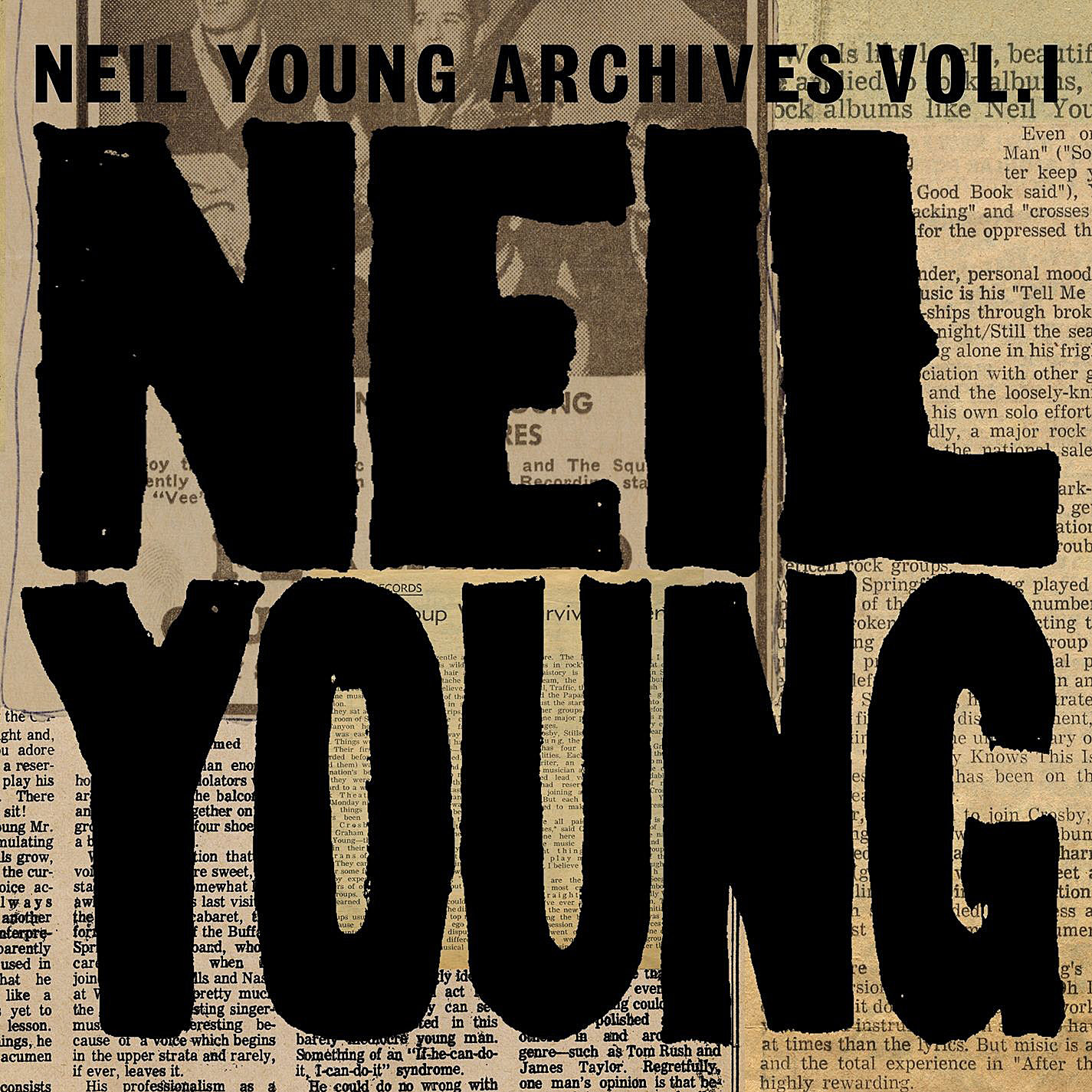
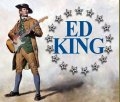 BY ED KING ROCK EXPERT “They’ve got it now, Robbie,” says Neil Young to The Band’s Robbie Robertson in The Last Waltz. Young has just been introduced and run through a few chords and notes on his harmonica. Young cracks himself up at his mock-confident assurance before launching into a performance of “Helpless” that would forever help me begin to come to terms with both the wheat and the chaff among this free-wheeling artist’s highs, lows, suspect collaborators, and unintended associations. The fact that Young could do this while retaining such a singular voice was eye opening. The “singular voice” thing wasn’t hard for me to grasp. I’d gravitated toward the opinionated, iconoclastic sort for as long as I could remember, but embracing and making the most of the likes of Crosby and Stills? No thank you! Sure, I’d been thinking this stuff to death. As a 9-year-old boy hearing “Heart of Gold” on AM radio, this Neil Young guy sounded pretty damn cool and deep. A few years later, however, between wondering what he saw in those smug, hippie CSN assholes and suffering the Neil-lite of America’s “A Horse With No Name” my life with Neil Young was on life support. Even in 8th grade, with Neil’s “Cinnamon Girl” among the ranks of hundreds of girls, real and imagined, I was bursting to simply talk to if not touch, this guy had some unsettling baggage. It wasn’t until 10th grade, when I saw him in The Last Waltz, that I finally found a way to get inside Neil Young and his music. It would be too late to help me fully navigate the high school social scene, but it was a start.
BY ED KING ROCK EXPERT “They’ve got it now, Robbie,” says Neil Young to The Band’s Robbie Robertson in The Last Waltz. Young has just been introduced and run through a few chords and notes on his harmonica. Young cracks himself up at his mock-confident assurance before launching into a performance of “Helpless” that would forever help me begin to come to terms with both the wheat and the chaff among this free-wheeling artist’s highs, lows, suspect collaborators, and unintended associations. The fact that Young could do this while retaining such a singular voice was eye opening. The “singular voice” thing wasn’t hard for me to grasp. I’d gravitated toward the opinionated, iconoclastic sort for as long as I could remember, but embracing and making the most of the likes of Crosby and Stills? No thank you! Sure, I’d been thinking this stuff to death. As a 9-year-old boy hearing “Heart of Gold” on AM radio, this Neil Young guy sounded pretty damn cool and deep. A few years later, however, between wondering what he saw in those smug, hippie CSN assholes and suffering the Neil-lite of America’s “A Horse With No Name” my life with Neil Young was on life support. Even in 8th grade, with Neil’s “Cinnamon Girl” among the ranks of hundreds of girls, real and imagined, I was bursting to simply talk to if not touch, this guy had some unsettling baggage. It wasn’t until 10th grade, when I saw him in The Last Waltz, that I finally found a way to get inside Neil Young and his music. It would be too late to help me fully navigate the high school social scene, but it was a start.
The release of an 8-CD box set, Archives, Vol. 1: 1963-1972, set me on a journey through the past with Neil, an artist I’ve bought a good 15 albums by, most of which I’ve cranked up, fired up to, and shed a tear over. I dumped one a few months after buying it, Ragged Glory, which launched his “Godfather of Grunge” era and, for me, drove home the sorry site of a middle-aged rocker in ill-fitting jeans. Today I find myself square in my own rocker in ill-fitting jeans era. Although I’ve never listed him, in mouth-breather fanboy fashion, on any list of my All-Time Favorite Artists of, Like, Ever, I’m appreciating more than ever the role Neil Young played in my high school years and beyond. It wouldn’t surprise me if a lot of Young fanatics already own most of this set in bootleg/blog download form. A few years ago, for instance, a friend handed me five CDs worth of Buffalo Springfield outtakes and early solo recordings of this variety, all swiped from the web. Young’s finished recordings are so direct and unpolished that, if you like his stuff, it’s hard to go wrong with this archived material documenting the development of his voice. That said, this collection is not to be mistaken for Vol. 1 of an expanded Decades, the classic 3-lp collection of Neil’s work through the mid-’70s that is still the best place to start if you want to make one Neil Young purchase before departing on a year-long trip to the moon.
Speaking of the high school social scene, around the same time I acquired this box set I finally gave into Facebook. As a friend promised, it’s given 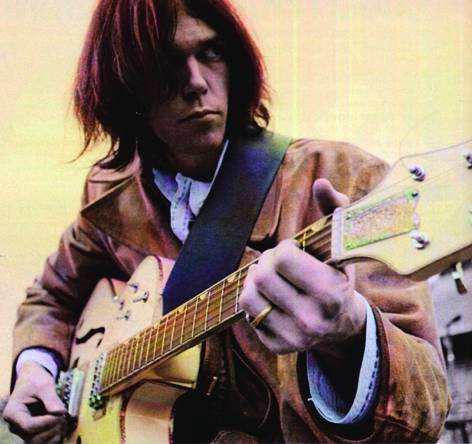 me the chance to catch up with old classmates who’d long left my life, including grade school classmates I lost touch with before our voices broke. Most of our interactions, following an initial string of messages that confirms we’re actually alive and all grown up, are of the Like variety. I Like their link; they Like my status update. It’s not too far removed from our hallway greetings and furtive classroom giggles. The more I surfed Facebook and spun Neil the more I thought about what a great a role model Neil could have been for me through my high school years. Unlike my more idealistic and confrontational rock ‘n roll heroes, Neil got along with anyone who crossed his path all the while doing it his way. It’s cool, you know?
me the chance to catch up with old classmates who’d long left my life, including grade school classmates I lost touch with before our voices broke. Most of our interactions, following an initial string of messages that confirms we’re actually alive and all grown up, are of the Like variety. I Like their link; they Like my status update. It’s not too far removed from our hallway greetings and furtive classroom giggles. The more I surfed Facebook and spun Neil the more I thought about what a great a role model Neil could have been for me through my high school years. Unlike my more idealistic and confrontational rock ‘n roll heroes, Neil got along with anyone who crossed his path all the while doing it his way. It’s cool, you know?
A range of characteristics apply to Neil Young and his music: romantic, rebel, traditionalist, trailblazer, burnout, iconoclast, oaf… They’re all represented in this collection of early and breakthrough recordings, including demos, alternate takes, and live recordings. Two of the concerts were released separately just a few years ago, but it’s cool, it’s Neil Young. I doubt he can keep track of all the archived material he’s generated. Isn’t that the way it is with most of us? Isn’t that why we have FB friends posting pictures of us in compromising and long-forgotten positions?
A shot of me and my oldest friend, age 10, crouched with a stand-alone record player and the American Graffiti soundtrack album under a card table covered in cardboard decorated as a jukebox at some lower school fair has yet to surface, but that’s where I first began to find my musical voice. Neil is captured finding his voice on the set’s first CD, beginning with early ’60s recordings with a bunch of young fresh fellows in a surf-rock vein. At first these cuts are a shock to the system, but after a few spins these attempts at a then-contemporary style rock ‘n roll reveal themselves as one more traditional component, along with folk and country music, of Young’s signature style as well as a belated rationale for some of his more head-scratching departures during his Geffen years (eg, Everybody’s Rockin’). Then Neil begins sounding like Neil, with early versions of “Sugar Mountain” and Buffalo Springfield’s “Nowaday’s Clancy Can’t Even Sing.”
A CD of recordings from his Topanga scene, circa 1968-1969, follows. Here Neil really starts sounding like Neil, with a laid-back take on “Everybody Knows This Is Nowhere.” It’s a cool recording, but it lacks the rebellious bite of the hipster anthem that would be the title track of his second solo album. A studio take on “The Loner” is a windfall for fans of the flat, reedy fuzz guitar fills that Young would first deliver to the public on “Mr. Soul.” It’s cool to hear Young’s music in such a constricted, claustrophobic setting, but it’s not really Neil. This set delivers a number of Neil/Not Really Neil moments until it moves into the third CD, a live solo recording from Toronto’s Riverboat in 1969. For the first time Neil has no choice but to be Neil. Contrasted with the 1971 live solo performance at Toronto’s Massey Hall a few CDs later, the rhythms are not yet nailed down in this ’69 set, but the songs and Neil’s easygoing humor are in bloom. The Neil who can walk unadorned through any social scene begins to take shape. I wish I’d been able to contemplate this moment in Neil development when I was trying to get my own act together. FB friends don’t often post photos of FB friends first learning to be themselves. That rarely happens when the cameras come out at a late-night college party.
The rest of this box set shows other aspects of Neil Young in development: recordings with his CSN buddies, a raw live show with Crazy Horse (like the Massey Hall disc, previously released as a single CD), early takes on the Harvest material. By this point, however, Neil is clearly Neil, and Neil is in charge. Because of that the later discs are more listenable but not as enlightening. It’s cool, though, it’s Neil. If only I’d figured out how to be half as cool when it mattered, when memories of my rediscovered FB friends were first cemented. The psychic stew represented by Neil Young played right into the culture of my small high school. With all that Young’s music and persona represented, there was a good chance that any two thirds of it might feel as if it was directed at any one of us. A Venn diagram of high school personality types intersecting with Neil’s music would show great overlap in all areas: burnouts and preppies reflecting on the sensitive acoustic tunes, rockers and jocks throwing back “ponies” of Rolling Rock, prog-rockers and punks digging through the rubble of On the Beach. How about Neil the hippie icon reaching out to Johnny Rotten, in both acoustic and crunching power rock fashion? They surely had gotten it by that point, Robbie.
***
ALBUM OF THE DECADE: Yankee Hotel Foxtrot
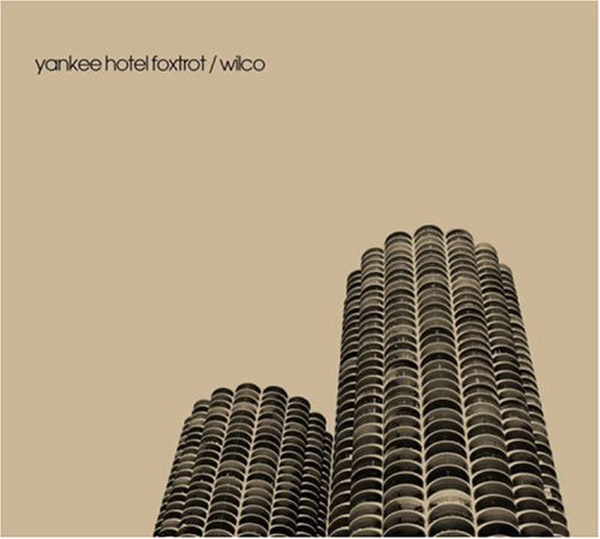
![]() BY JONATHAN VALANIA so much depends / upon / a red wheel / barrow / glazed with rain / water / beside the white / chickens. That was written by William Carlos Williams, an American poet. Best I can tell, he was talking about the significance of insignificance, that little things truly do mean a lot — like if you could surf the past in a time machine and you did something as small as, say, kicking a stone in the Stone Age, it could send a ripple through the entire fabric of history. Everything after could be slightly different. You might even erase yourself from existence. I bring this up because this is a story about American poets, who will be referred to hereafter as the rock band Wilco. And this is a story filled with insignificance: business deals, personnel changes, communication breakdowns, creative dysfunction and small personal failures. Basically, a lot of red wheelbarrows in the rain that so much depends upon. Not the least of which is Yankee Hotel Foxtrot, which I’m pretty sure will be remembered one day as great American poetry in thought and word and sound and action. If 1999’s Summerteeth was Wilco’s Pet Sounds, Yankee Hotel Foxtrot is its Smile — American beauty edged in transcendental weirdness and giddy invention.
BY JONATHAN VALANIA so much depends / upon / a red wheel / barrow / glazed with rain / water / beside the white / chickens. That was written by William Carlos Williams, an American poet. Best I can tell, he was talking about the significance of insignificance, that little things truly do mean a lot — like if you could surf the past in a time machine and you did something as small as, say, kicking a stone in the Stone Age, it could send a ripple through the entire fabric of history. Everything after could be slightly different. You might even erase yourself from existence. I bring this up because this is a story about American poets, who will be referred to hereafter as the rock band Wilco. And this is a story filled with insignificance: business deals, personnel changes, communication breakdowns, creative dysfunction and small personal failures. Basically, a lot of red wheelbarrows in the rain that so much depends upon. Not the least of which is Yankee Hotel Foxtrot, which I’m pretty sure will be remembered one day as great American poetry in thought and word and sound and action. If 1999’s Summerteeth was Wilco’s Pet Sounds, Yankee Hotel Foxtrot is its Smile — American beauty edged in transcendental weirdness and giddy invention.
Picking up where Summerteeth left off, Jeff Tweedy wanted to continue moving away from the band’s early rip-it-up live aesthetic and into heretofore uncharted territories of mood, vibe and sound. He began to realize mysterious things happened in the spaces between words, and that when you arranged them in certain ways, you could create magnetic fields of deep suggestiveness. He experimented with collage and cut-up techniques, snipping words out of newspapers and magazines, tossing them in a hat and drawing them randomly to see what sentences they made. Concurrently, marriage and fatherhood had deepened Tweedy’s perspective. He learned to quiet his mind in the hours he would sit by his son Spencer’s bedside, waiting for him to fall asleep. “I really just started reading six years ago,” says Tweedy. “It’s not like I didn’t read before, but now I actually finish books. I’ve finished more books in the last six years than I did in the preceding 28 years of my life.” Books like The Making Of A Poem: A Norton Anthology Of Poetic Forms and The Anxiety Of Influence: A Theory Of Poetry by Harold Bloom. Beckett novels. Books about Dadaism, surrealism and minimalism. It was obvious to anyone who was paying attention that Tweedy was becoming something extremely rare in rock ‘n’ roll: a poet.
YHF is the smoking gun in the case for Wilco being the new Great American Band—a torch-passing tradition that stretches from prime R.E.M. to the Band to Bob Dylan, who got it from Woody Guthrie, who picked it up from Carl Sandburg, who had it passed to him by Walt Whitman. The wonderment of this artistic triumph is made all the more remarkable by the fact it happened at a time when Wilco — perhaps the last group we’ll be able to refer to as “a great underground major-label rock band” — was completely reinventing itself in public. First, the drummer was asked to leave. Then the guitar player was asked to leave. Finally, the band’s label asked the band to leave. How and why all these things happened depends on whom you ask. That’s the thing about these red wheelbarrows upon which so much depends. MORE
*
